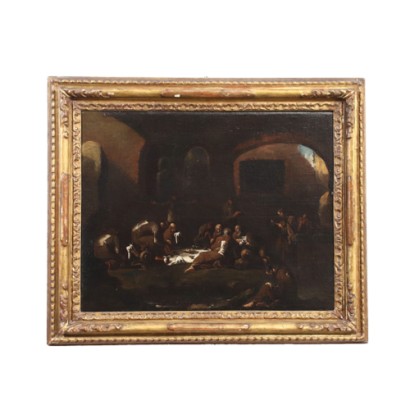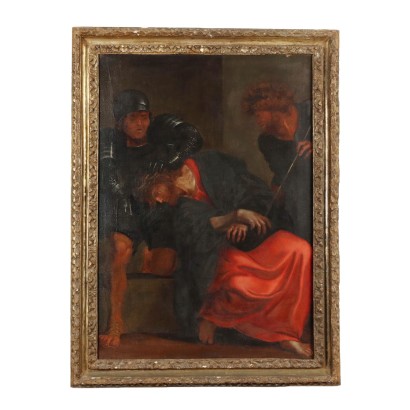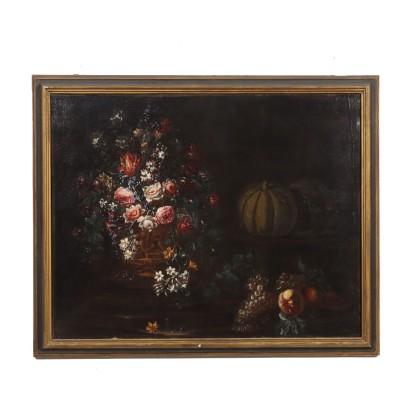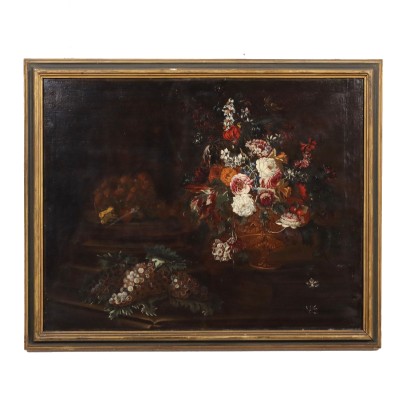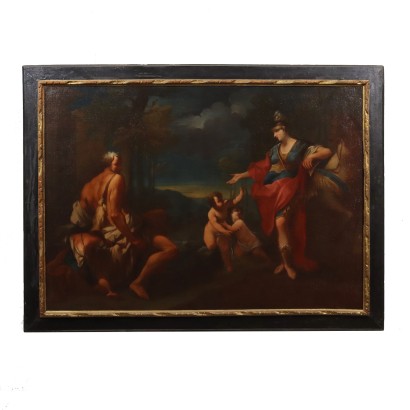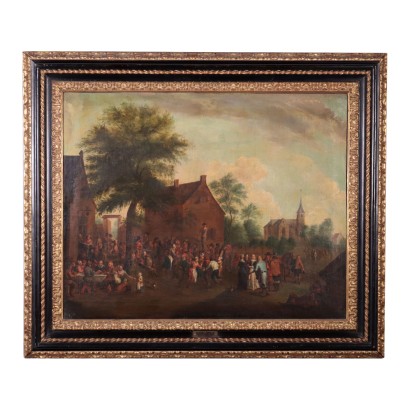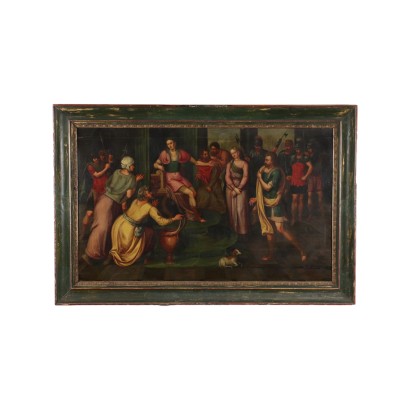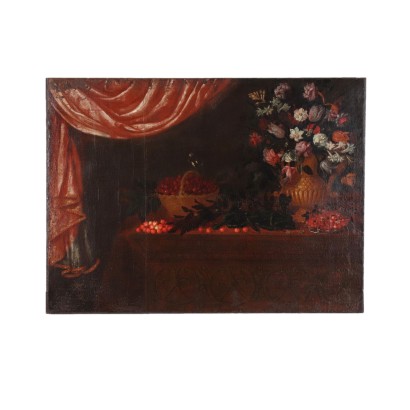ARARPI0132200
The Monk's Lunch Oil on Canvas Genoese School Italy XVIII C
The Monks Lunch
Oil on canvas. Genoese school of the eighteenth century. Inside a large room with arched windows opening onto the street, a group of friars seated on the ground are sharing a simple meal, placed on a white cloth. The scene refers to the sphere of Alessandro Magnasco known as Lissandrino (1667 -1749), a Genoese artist considered one of the most original painters of the Italian eighteenth century, who distinguished himself in popular genre painting and, in particular, in the production of scenes from the life of Capuchin or Camaldolese friars engaged in the most varied activities, from studying in the library to confession, from the work of sharpeners or carpenters in the convent workshops to the simple recollection around the fire: in these works you can appreciate all the expressive freedom of the artist\'s brush. moves on the canvas with quick touches to describe flames, fireplaces, cats, books, dogs, poor bowls, lenses, books, poor patched clothes, chairs and stools, in short, a whole daily world of gestures and things built with a very special and unmistakable technique, made of a mixture of lively color and almost all played on monochrome, on which a few, skilful strokes of light descend to give shape and consis tence to the bony figures of the monks. The author of the work proposed here was certainly trained in the Magnasco area and was inspired by his style, although it is more sedate, without the flashes and interpretative freedom, often irreverent or ironic, towards the figures of the friars; he was able to take up the play of chiaroscuro, lights and shadows, which flow from a monochrome in the shades of browns, still creating a work of excellent pictorial quality. Restored and relined, the painting is presented in a gilded frame from the early 1900s.




